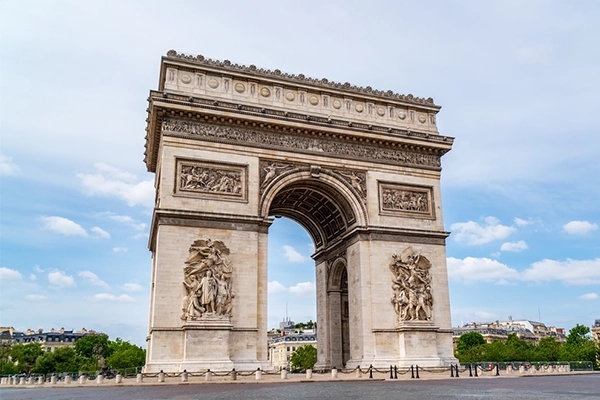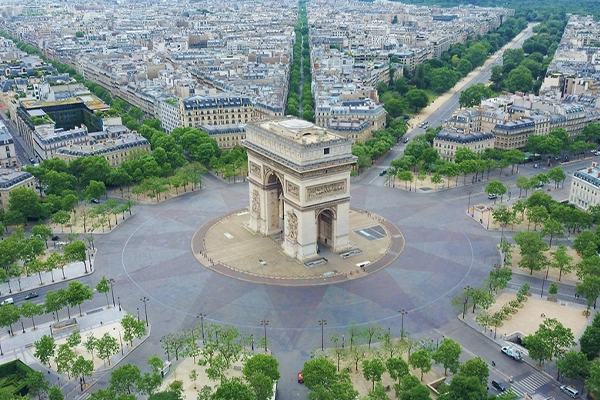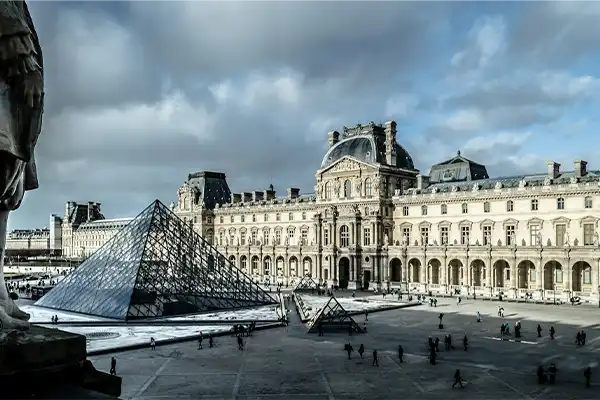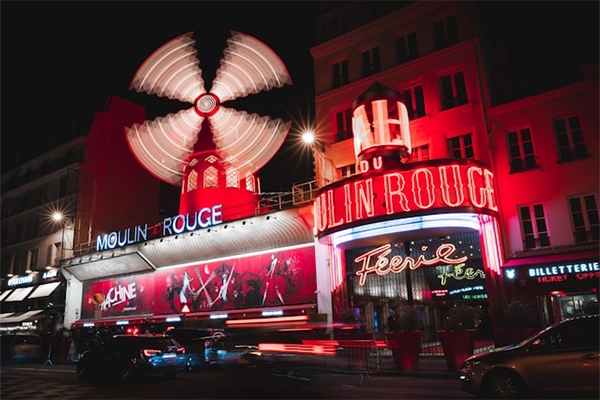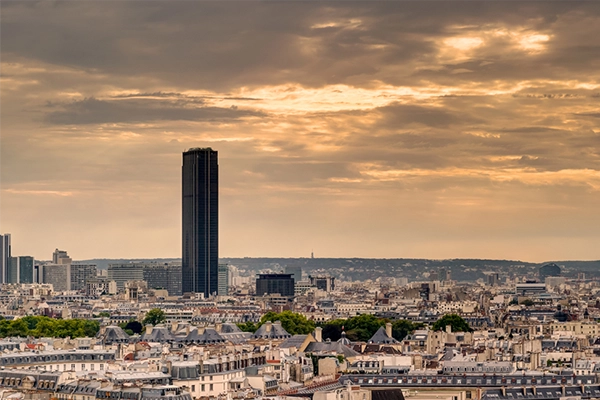Interesting Arc de Triomphe Facts and Secrets
Interesting Arc de Triomphe Facts and Secrets
Explore intriguing Arc de Triomphe facts and secrets. This page is divided into two sections: concise facts and engaging trivia, deepening your appreciation for this legendary monument.
Join us as we unravel the historical significance of the Arc de Triomphe and discover the captivating stories behind this immense monument.
Quick Facts about the Arc de Triomphe
- Address: Arc de Triomphe, Place Charles de Gaulle, 75008 Paris
- Original name: Arc de Triomphe de l’Étoile
- Dimensions:
> Height: 50 meters (164 feet)
> Length: 45 meters (148 feet)
> Width: 22 meters (72 feet)
> Weight: 600,000 tons
> Steps to take to the rooftop: 284 - Construction started and finished: 1806 – 1836
- Architects: Jean Chalgrin (primary architect), Jean-Baptiste Lepère, Aimé-Jacques Gabriel
- Engineers: Louis-Alexandre de Cessart (chief engineer), Joseph Aubert, Guillaume-Henri Dufour
- Architectural style: Neoclassical
- Renowned for its: Iconic triumphal arch shape, panoramic view of Paris from its rooftop, prominent location at the western end of the Champs-Élysées.
- Special Events: Bastille Day military parade, Armistice Day ceremony (11 November), Christmas Eve mass, New Year’s Eve celebrations
- Number of Visitors per Year: 1.5 million
14 Fun Facts and Secrets about the Arc de Triomphe
Explore the enchanting nuances of Arc de Triomphe through these intriguing and delightful nuggets of information:
Built on the Bones of Soldiers
During the construction of the Arc de Triomphe, the foundations were built on top of a mass grave containing the remains of 12,000 soldiers who died in the French Revolution. This morbid detail is a reminder of the heavy cost of war.
Inspired by a Roman Arch
The Arc de Triomphe is modeled after the Arch of Titus in Rome, a triumphal arch built in the 1st century AD to commemorate the Roman Emperor Titus’s conquest of Jerusalem. The Arc de Triomphe’s design incorporates several elements from the Arch of Titus, such as its symmetrical structure and the relief sculptures that depict scenes of military victory.
Never Saw His Own Project Completed
The Arc de Triomphe was commissioned by Napoleon I in 1806, but construction took over 30 years until it was completed in 1836. However, he never had the opportunity to see the result in person as he died in 1821. The arch was initially envisioned as his final resting place, but his body was never actually placed there. Instead, Napoleon’s tomb was built in the Hôtel des Invalides, where he was buried in 1840 after his remains were exhumed from St. Helena and returned to France.
The Solar Alignment
Twice a year, on the summer solstice and the winter solstice, the sun sets directly behind the Arc de Triomphe, casting a long shadow that extends down the Champs-Élysées. This rare phenomenon is a testament to the precision of the arch’s construction.
The Elephant Blueprint
An early proposal for the Arc de Triomphe was for a monumental triumphal arch shaped like an elephant. The elephant design was ultimately rejected, but it remains a fascinating testament to the creativity of the architects involved in the project.
Risky Stunt with a Happy Ending
On November 11, 1919, French aviator Charles Godefroy flew a Nieuport 28 fighter plane through the Arc de Triomphe to commemorate the Allied victory in World War I. The stunt was a daring and symbolic gesture that captured the imagination of the public and helped to solidify the Arc de Triomphe’s status as a symbol of French military prowess.
A Hidden Passageway for Royalty
A secret passageway known as the “Galerie des Princes” runs beneath the Arc de Triomphe. This luxurious corridor was originally intended to provide a direct route for the French royal family to enter the arch without having to mingle with the public. The passageway was never used by the royals, but it remains a fascinating remnant of a bygone era.
A Miscalculation that Saved Lives
During the construction of the Arc de Triomphe, a mathematical miscalculation resulted in a slight shift in the arch’s center. This seemingly insignificant error actually prevented the collapse of the structure during a severe storm in 1830. The misaligned arch deflected the wind’s force, and the arch survived the storm unscathed.
A Monument with a Secret Weapon
During World War I, the Arc de Triomphe was equipped with a secret weapon known as the “Canon de 75.” This artillery piece was concealed beneath the arch and could be used to defend the city from approaching enemy forces. The Canon de 75 never fired during the war, but its presence served as a deterrent to potential attackers.
The Ghostly Specter
In the early 1950s, a mysterious specter was reported to haunt the Arc de Triomphe. The apparition, said to be the ghost of a World War I soldier, was seen several times by different people. The sightings eventually stopped, but the story of the Arc de Triomphe ghost continues to intrigue visitors to this day.
The Literary Inspired
Several renowned literary figures have been inspired by the Arc de Triomphe. Poet Victor Hugo wrote a poem about the arch, and novelist Marcel Proust described it in his novel “In Search of Lost Time.” The Arc de Triomphe’s grandeur and symbolism have captivated writers for centuries.
The Fashionable Icon
The Arc de Triomphe has also made a significant impact on fashion. In the late 19th and early 20th centuries, the arch was often featured in fashion magazines and advertisements. It became a symbol of French elegance and sophistication, and it continues to be a popular backdrop for fashion shoots today.
The Artistic Legacy
The Arc de Triomphe has been a source of inspiration for artists for centuries. Painters, sculptors, and photographers have captured its beauty and grandeur in their works. The arch has even inspired musical compositions, and it remains a powerful symbol of French culture.
Unveiling the Unknown Soldier’s Identity
In 1920, the body of an unidentified French soldier who perished during World War I was laid to rest under the Arc de Triomphe. Over the years, there have been numerous claims about the soldier’s identity, but none have been definitively proven. In 2002, DNA testing was conducted on the soldier’s remains, but the results were inconclusive. The mystery of the Unknown Soldier’s identity continues to fascinate and intrigue people worldwide.
Book Arc de Triomphe Tickets
Explore below your Arc de Triomphe ticket options and pick from the finest selection:






